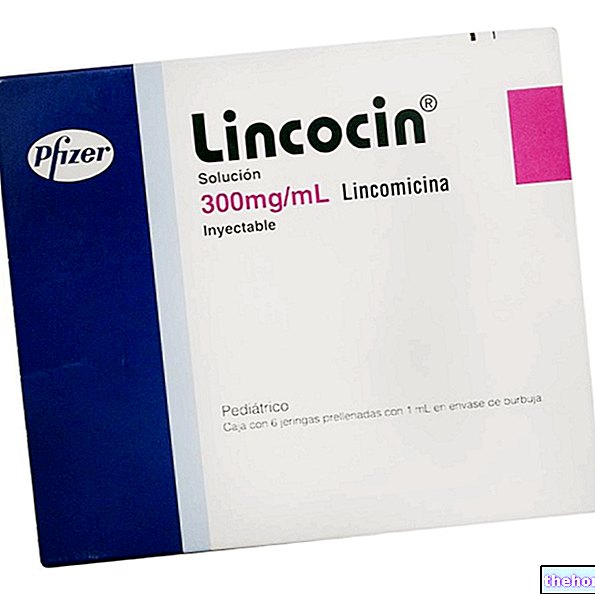
Pramipexole is available in a number of oral medications that may be formulated as prolonged-release tablets or tablets. Such medications would require repeatable prescription (RR) submission to be dispensed; however, being classified as tier drugs A, their cost can be reimbursed by the National Health Service (SSN), wholly or partially depending on the case (it may be necessary to pay a ticket).
Examples of Medicines containing Pramipexole
- Mirapexin®
- Oprymea®
- Pramiperal®
- Pramipexole Eg®
- Pramipexole Mylan®
- Pramipexole Sandoz®
- Pramipexole Teva®
- Pramipexole Zentiva®
Note: the therapeutic indications may vary according to the type of medicine considered and the concentration of pramipexole contained. For more detailed information, please refer to the package insert of the product.
o blood vessels;In addition, the physician should be informed if, during treatment, impulse control disorders appear which may include, for example: gambling addiction, eating, overspending, unusually high sexual desires, etc. In such cases, the doctor may reduce the dose or stop therapy.
At the same time, the physician should be informed if, during therapy with pramipexole, the patient develops mania (agitation, feeling euphoric or overexcited) or delirium (reduced awareness, confusion or loss of a sense of reality). Again, the doctor can intervene by adjusting the dose of the drug or stopping the treatment.
In the event of a reduction in the dose of pramipexole administered or discontinuation of treatment, the doctor should be notified immediately if symptoms such as depression, apathy, anxiety, fatigue, sweating or pain occur.
PLEASE NOTE
- The use of pramipexole in children and adolescents less than 18 years of age is not recommended.
- Pramipexole can cause undesirable effects (hallucinations, drowsiness, etc.) capable of affecting the ability to drive vehicles of any kind and use machines. Therefore, it is recommended to avoid such activities in case similar effects appear.
Furthermore, before starting to take the aforementioned active ingredient, it is necessary to inform your doctor if you are taking or have recently taken drugs such as:
- Amantadina;
- Cimetidine;
- Mexiletine;
- Zidovudine;
- Cisplatin;
- Quinine;
- Procainamide.
In addition, great caution should be exercised if you are taking sedative medicines as in these cases it increases the likelihood that pramipexole may impair your ability to drive or use machines.
If you are already taking levodopa, it is recommended that your doctor reduce the dose before you start taking pramipexole.
However, before you start taking pramipexole you should tell your doctor if you are taking, have recently taken or might be taking any medications or products of any kind, including non-prescription drugs (SOP), over-the-counter (OTC) medicines, herbal and phytotherapeutic products, homeopathic products, etc.
If in doubt, consult your doctor.
Pramipexole with Alcohol
The intake of alcohol while taking pramipexole should be done with great caution. It is recommended that you seek advice from your doctor.
, manifesting undesirable effects different in type and intensity, or not manifesting them at all.Below are some of the side effects that may occur with the use of the different medicines containing pramipexole. For more specific information, read the package leaflet of the medicine you are taking.
Undesirable effects in patients with Parkinson's disease
The following side effects may occur in patients where pramipexole is used to treat symptoms of Parkinson's disease:
Very Common and Common Undesirable Effects
- Dyskinesia;
- Dizziness
- Nausea;
- Drowsiness;
- Impulses that lead to behaving in an unusual way;
- Hallucinations;
- Confusion;
- Animal dreams;
- Insomnia;
- Headache;
- Fluid retention;
- Hypotension;
- Changes in vision
- Constipation;
- Weight loss associated with loss of appetite.
Uncommon Undesirable Effects
- Delirium;
- Paranoia;
- Amnesia;
- Excessive sleepiness and sleep episodes with sudden onset;
- Hyperkinesia;
- Weight gain
- Fainting
- Heart failure;
- Restlessness;
- Dyspnea;
- Inappropriate antidiuretic hormone secretion;
- Hiccup;
- Pneumonia;
- Impulse control disorders;
- Delirium (reduced awareness, confusion, loss of a sense of reality);
- Allergic reactions.
Undesirable Effects Rare and of unknown frequency
- Mania;
- Depression, anxiety, apathy, fatigue, sweating or pain (symptoms of dopamine agonist withdrawal syndrome) following discontinuation or reduction of pramipexole dosage.
Undesirable effects in patients with Restless Legs Syndrome
However, in patients where pramipexole is used to treat symptoms of restless legs syndrome, the following side effects may occur:
Very Common and Common Undesirable Effects
- Nausea;
- He retched;
- Tiredness;
- Sleep disturbances, such as insomnia or sleepiness
- Headache;
- Abnormal dreams
- Dizziness
- Constipation.
Uncommon Undesirable Effects
- Impulses that lead to behaving in an unusual way;
- Dyskinesia;
- Hyperkinesia;
- Inappropriate antidiuretic hormone secretion;
- Weight gain
- Amnesia;
- Hallucinations;
- Delirium;
- Confusion;
- Excessive sleepiness and sleep episodes with sudden onset;
- Hypotension;
- Fainting
- Hiccup;
- Dyspnea;
- Pneumonia;
- Impulse control disorders;
- Mania;
- Delirium (reduced awareness, confusion, loss of a sense of reality);
- Allergic reactions.
Undesirable Effects Rare and of unknown frequency
- Depression, anxiety, apathy, fatigue, sweating or pain (symptoms of dopamine agonist withdrawal syndrome) following discontinuation or reduction of pramipexole dosage.
Pramipexole overdose
If you take too much pramipexole you may experience symptoms such as: vomiting, feeling restless or any of the side effects listed above. Therefore, in the event of an overdose of pramipexole - known or suspected - it is necessary to contact your doctor immediately or go to the nearest hospital, taking care to take the package of the medicine taken with you.
dopamine type 2 (D2).In patients with Parkinson's disease there is a severe deficiency of this neurotransmitter in the substantia nigra. Thanks to its agonist effect, pramipexole is able to mimic the effect of dopamine through the stimulation of its receptors at the level of the striatum (which also includes the substantia nigra), which results in an alleviation of Parkinsonian motor deficits.
As regards restless legs syndrome, the mechanism of action by which pramipexole is able to induce its therapeutic effect is not known, although neuropharmacological evidence suggests the involvement of the primary dopaminergic system.
.
For the treatment of restless legs syndrome, pramipexole is usually taken in the evening, two to three hours before bedtime.
PLEASE NOTE
Treatment of Parkinson's disease with pramipexole should not be stopped abruptly, as abrupt discontinuation could induce the development of neuroleptic malignant syndrome (characterized by symptoms such as muscle stiffness, akinesia, fever, blood pressure instability, tachycardia, confusion, decreased of consciousness or coma) exposing the patient to serious health risks.
In addition, abrupt discontinuation of pramipexole treatment could promote the development of "another medical condition called dopamine agonist withdrawal syndrome, symptoms of which include: depression, apathy, anxiety, fatigue, sweating or pain. these symptoms, you should contact your doctor right away.
and can pass into breast milk thus reaching the baby. For these reasons, its use in breastfeeding mothers should not be done. If treatment with pramipexole is absolutely necessary, breastfeeding should be discontinued.Therefore, in the light of the above, if it is necessary to initiate therapy with pramipexole, it is essential that pregnant women and mothers who are breastfeeding promptly inform their doctor of their condition.



























